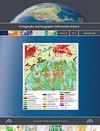城市种族隔离的扩展时空暴露指数
IF 2.4
3区 地球科学
Q1 GEOGRAPHY
Cartography and Geographic Information Science
Pub Date : 2021-11-02
DOI:10.1080/15230406.2021.1965915
引用次数: 3
摘要
隔离指数量化了社会群体或阶层的隔离程度。由于越来越多地使用细粒度时空活动和流动数据,传统的隔离测量的包容性受到了挑战。我们将人口流动加入到传统的基于地点的空间暴露指数中,以识别时空隔离的变化。具体来说,我们考虑了人口流动网络、层次结构和时间。在芝加哥的示范案例研究中,我们首先使用了与时间相关的Twitter原点-目的地流矩阵及其层次结构信息来估计邻域级区域单元之间的相互作用。在此基础上,我们计算了不同时间单元之间的相互作用,并估算了不同时间单元的时空暴露指数。最后,我们在全球和地方尺度上系统地比较了它们与传统指数的差异,以了解人口流动模式如何影响暴露指数。结果表明,人口流动模式在时间和空间维度上反映了邻域相互作用的有价值信息,但在传统的隔离计算中缺乏信息。此外,我们强调流型的层次结构和适当参数的选择也是合理分离评价的重要因素。本文章由计算机程序翻译,如有差异,请以英文原文为准。
An extended spatiotemporal exposure index for urban racial segregation
ABSTRACT The Segregation Index quantifies the degree of segregation of social groups or classes. Because of the increasing use of fine-grained spatiotemporal activity and flow data, the conventional segregation measurements’ inclusiveness is challenged. We add population flow to the conventional place-based spatial exposure index to identify spatiotemporal segregation changes. Specifically, we considered the population-flow network, hierarchical structure, and time. In Chicago’s demonstration case study, we first used the time-dependent Twitter Origin-Destination flow matrices and their hierarchical structure information to estimate interactions between areal units at the neighborhood level. Then we computed the new population composition of units based on their interactions with other units and estimated the proposed spatiotemporal exposure index for different times. Finally, we systematically compared their differences with the conventional indices at global and local scales to see how population-flow patterns affect the exposure index. The results show that the population-flow patterns reflect valuable information in neighborhood interactions in temporal and spatial dimensions, but it is missing information in the conventional segregation computations. Furthermore, we emphasize that the hierarchical structures of flow patterns and the choice of appropriate parameters are also important factors for a rational segregation evaluation.
求助全文
通过发布文献求助,成功后即可免费获取论文全文。
去求助
来源期刊
CiteScore
5.20
自引率
20.00%
发文量
23
期刊介绍:
Cartography and Geographic Information Science (CaGIS) is the official publication of the Cartography and Geographic Information Society (CaGIS), a member organization of the American Congress on Surveying and Mapping (ACSM). The Cartography and Geographic Information Society supports research, education, and practices that improve the understanding, creation, analysis, and use of maps and geographic information. The society serves as a forum for the exchange of original concepts, techniques, approaches, and experiences by those who design, implement, and use geospatial technologies through the publication of authoritative articles and international papers.

 求助内容:
求助内容: 应助结果提醒方式:
应助结果提醒方式:


